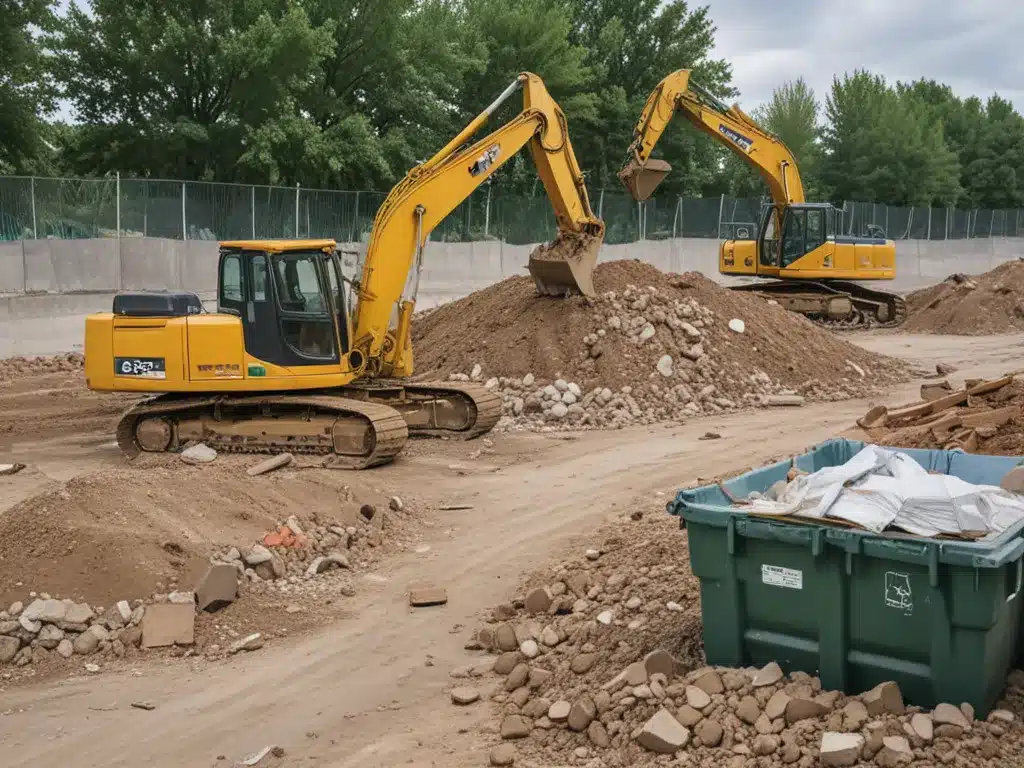Construction sites generate a significant amount of waste that needs to be properly managed. As the site manager, waste management is one of my top priorities as it can impact the environment, community, and bottom line if not handled correctly.
Why Construction Site Waste Management is Important
There are several reasons why waste management on construction sites is crucial:
Environmental Impact
Construction waste like concrete, wood, metals, bricks, etc. take up considerable landfill space. Improper disposal can lead to pollution of nearby water bodies and soil contamination. Proper waste segregation, recycling, and disposal reduces the environmental impact.
Community Health
Uncontrolled waste disposal attracts pests, causes foul odors, and is an eyesore. This affects the health and quality of life of nearby communities. Effective waste management eliminates these issues.
Cost Savings
Reusing and recycling waste like metals, wood, concrete debris reduces the need to purchase new materials. Sorting waste into hazardous and non-hazardous makes disposal easier and cheaper. Overall, good practices can result in significant cost savings.
Waste Management Plan
An effective construction waste management plan requires:
Waste Generation Estimate
Estimating the waste generation by type and quantity helps plan storage, manpower, equipment etc. Common waste includes:
- Concrete – leftover mix, debris
- Wood – plywood, packaging
- Metal – rods, pipes, frames
- Brick – broken pieces
- Glass
- Plastic – pipes, packaging
- Paper – cartons, plastic sheets
Waste Segregation
Segregating waste into hazardous (paints, chemicals, asbestos) and non-hazardous (wood, metal, plastic) streamlines the recycling and disposal process. Color coded bins should be placed at strategic locations.
Waste Storage
Proper on-site storage prevents contamination and saves space. Hazardous and non-hazardous waste should be stored separately in covered bins and cleared regularly. Space should be allocated as per the waste estimate.
Reuse & Recycling
Identifying opportunities to reuse materials on site reduces new purchases. Recyclable waste like wood, metal, concrete, plastic can be sold to recycling companies. This generates additional income.
Safe Disposal
Non-recyclable waste should be disposed of at approved landfills. Hazardous waste disposal requires special procedures. Licensed contractors should be used for safe transportation and disposal.
Monitoring Waste Management
To ensure effectiveness, the waste management program should be monitored:
- Inspect segregation, storage, recycling and record quantities
- Train workers on waste handling procedures
- Track waste generation vs recycling
- Analyze data to identify improvements
- Report waste management performance
- Reward workers for following procedures
Proper documentation and analysis helps optimize the program over time.
Challenges in Construction Waste Management
Some key challenges faced are:
- Lack of awareness in workers
- No segregation from source
- Space constraints for separate storage
- Contractors neglect safe disposal norms
- Lack of incentives for recycling
These can be overcome through training, strict supervision, rewards and penalties.
In summary, construction site waste management helps minimize environmental impact, improves site aesthetics and can result in significant cost savings. The key elements are accurate estimation, proper segregation, storage, reuse and recycling, safe disposal and continuous monitoring. With a well-planned and supervised program, construction firms can reduce waste drastically and contribute to sustainable construction practices.







